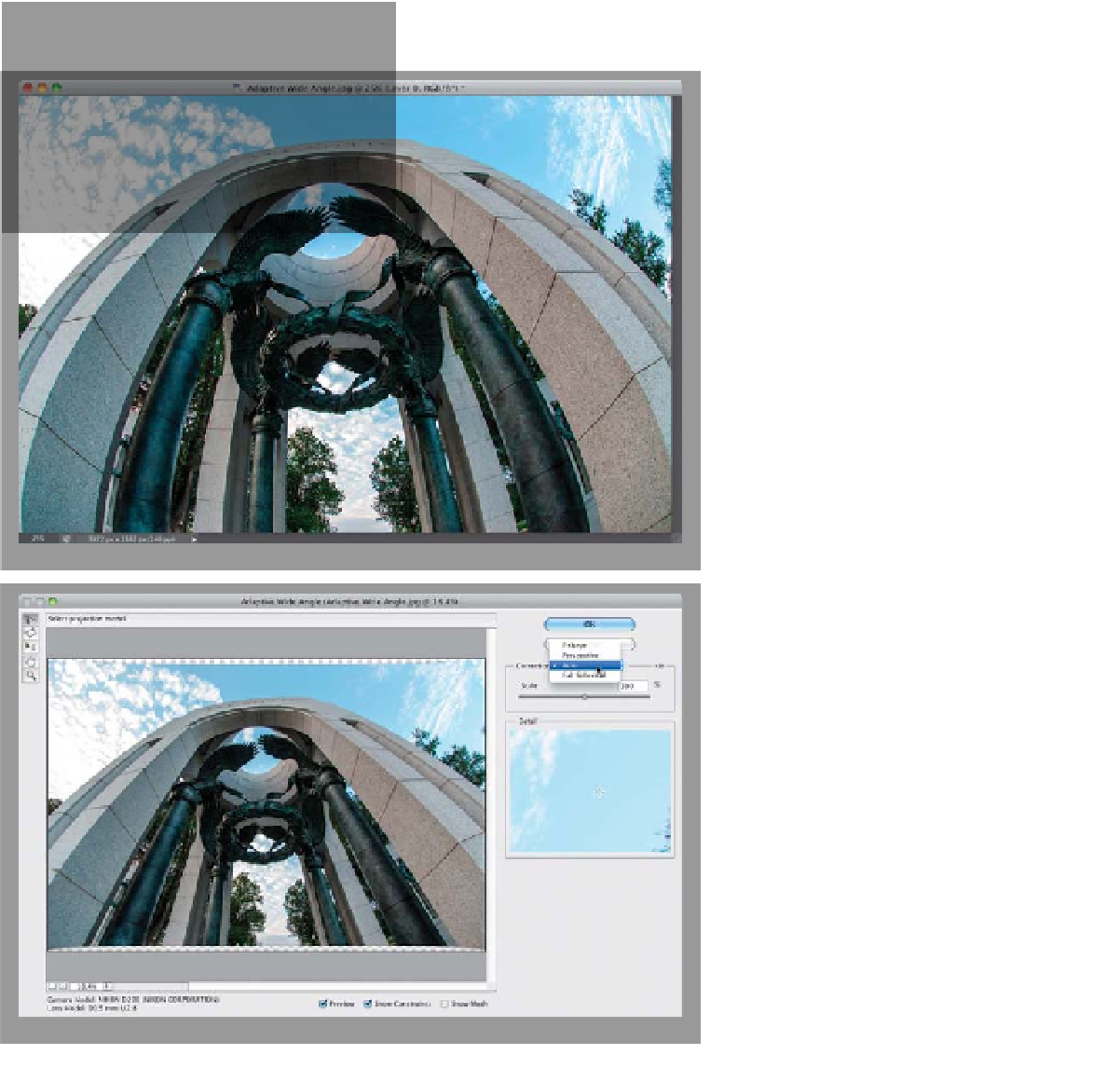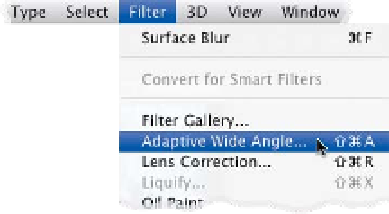Graphics Programs Reference
In-Depth Information
How's that one for a title? Well, that's the best explanation of what happens
sometimes when you shoot really wide, and in Photoshop CS6, there's a
tool called Adaptive Wide Angle that was invented for these situations.
However, there are three things you need to know about this filter: (1) you're
not going to use it very often, (2) you're either going to have to crop pretty
massively after using it or use Content-Aware Fill to fill in the gaps,
and (3) it actually does a pretty darn good job when you do need it.
Step One:
Open the photo that has a serious lens
issue you want to fix. I personally don't
use smart filters a bunch, because once
I apply a filter, I'm usually pretty much
done with it. But, in this case, it's not a
bad idea to first go under the Filter menu
and choose
Convert for Smart Filters
,
and then choose
Adaptive Wide Angle
from that same menu. The reason why
this might come in handy is that, depend-
ing on the image, you may need to come
back and tweak your existing filter set-
tings (well, it's been the case for me
anyway), and by making it a smart filter,
you can apply the filter, and then re-
open it with all the Constraint lines
still in place, so you can tweak them
(this will all make more sense in just
a minute).
Step Two:
When the Adaptive Wide Angle dialog
opens (shown here), it reads the lens
data embedded into the photo by your
camera (see the bottom-left corner of
the dialog), and it tries to apply an Auto
correction. Sometimes it does a pretty
good job, but in this case, you can see
the monument is still really bent, so we'll
have to help the filter out. If you know
the image is a fisheye, or if you just want
to try to fix perspective, choose either
from the Correction pop-up menu in
the top right to give you a better start-
ing point.
(Continued)











